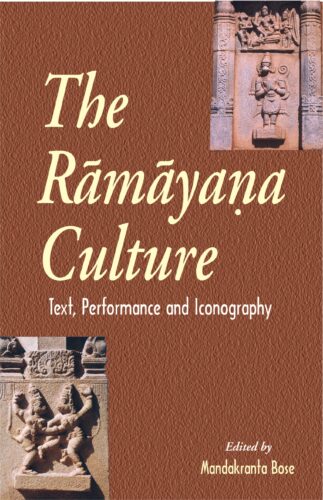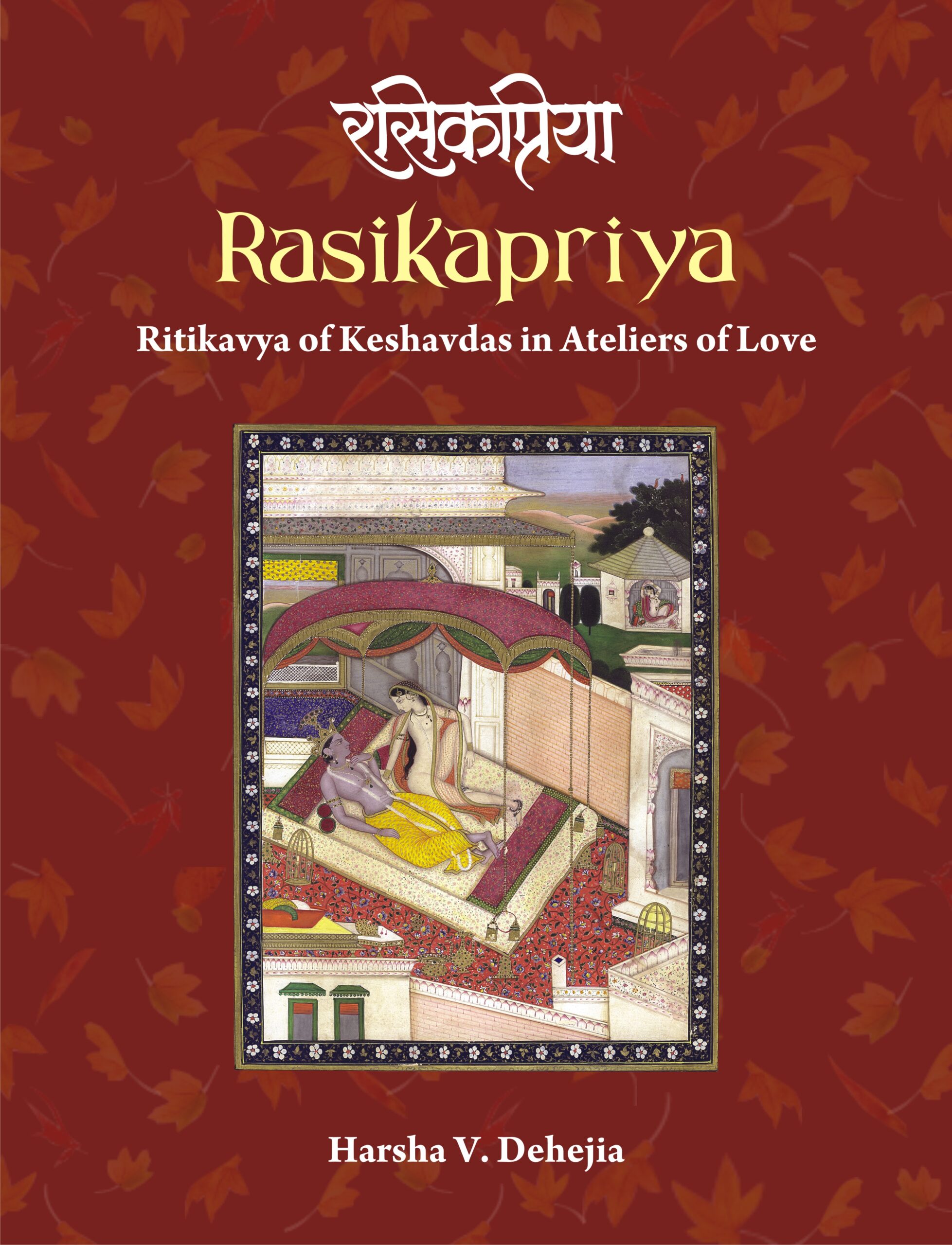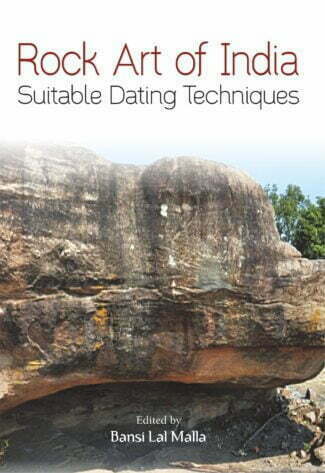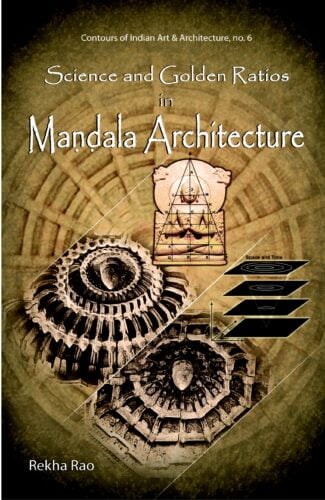Showing 91–100 of 122 results

The essays in this volume approach the Ramayana from different perspectives textual criticism, art and architecture, and film to understand its ideological and aesthetic meanings. They address critical issues like the seminal status of Valmiki, gender representation in Ramayana and the importance of the so-called Ramayana derivatives.
These essays, originally presented at an international conference, are in the forefront of the modern response to an ancient work that has gained a new critical and social relevance in contemporary scholarship. Approaching the Ramayana from several angles in an attempt to understand its aesthetic and ideological meaning, they examine the epic through the perspectives of textual criticism, art, architecture and film. Thereby they address critical issues such as the seminal status of Valmiki, the underlying problem of canonicity itself, the importance of other — so-called derivative — Ramayanas, the implications of gender representation, and the cultural manipulation of social ideals relating to the position of women and the idealisation of love that achieves its highest value in marriage. Using the methods of rigorous textual and historical investigation, each essay seeks not only to uncover the layers of meaning in the complex structure of the epic in its varied forms but also to situate it critically in the cultures of South and Southeast Asia.

This book brings, for the first time, the translation of the entire text of Rasikapriya of Keshavdas in English with more than 400 paintings. In its pages are whispers of Krishna and Radha, and the hushed voices of the sakhis as they celebrate romantic moments of longing and belonging in the regal splendour of pranaya mandaps of havelis or verdant and idyllic groves.
Rasikapriya is a lakshan granth, a foundational text, of ritikavya or mannered poetry, and Keshavdas is the father of ritikal. It was the early seventeenth century, and in the court of Raja Indrajit of Orchha in Bundelkhand, Keshavdas, the court-poet, would recite short romantic verses and the gathered connoisseurs of poets, musicians and dancers would respond, and the atelier would resonate with the many textures and hues of shringara. This was the beginning of Rasikapriya, a text that is still central in the celebration of love. Keshavdas was a poets poet and he created a monumental text that remains the gold standard of ritikavya even today. And if that was not enough Rasikapriya inspired artists to create paintings illustrating its many dohas and savaiyas even in the lifetime of the poet.
Artists in the ateliers of Malwa, Mewar, Bikaner, Bundi and Kangra, among others, were touched by the evocative poetry of Rasikapriya and created paintings that were visual poetry. The names of Sahibdin of Mewar, Ruknuddin of Bikaner and Purkhu of Kangra stand out as artists that brought Rasikapriya to life through their mellifluous kalams.
Rasikapriya remains one of the most profusely illustrated texts in India and finds a place in collections of museums and individuals alike all over the world. This book brings together, for the first time, the translation of the entire text in English along with more than 400 paintings collected from a variety of sources. In its pages are whispers of Krishna and Radha and the hushed voices of the sakhis as they celebrate romantic moments of longing and belonging in the regal splendour of pranaya mandaps of havelis or verdant and idyllic groves. And as readers of this book recreate the music and the splendour of this text they cannot remain untouched by the sensuality and spirituality of shringara rasa and affirm that in celebrating the loves of Krishna one is never far from bhakti.
The book is a visual delight, a connoisseurs companion and a reference manual for scholars.

The present volume mainly emphasizes on a long due and much discussed and burning issues like that of what will be the Suitable Dating Techniques for Indian Rock Art. It includes not only new insights but also new dating results.
Rock art is a vital archaeological source to study and analyse the cognitive evolution of the human intellect across the world. The importance of rock art and its dating has long been a key issue of rock-art research and continues to be attended by difficulties about methodology, misinterpretation of findings and overconfidence in the reliability or precision of results. Most of the rock-art researchers primary focus in their investigations for rock-art dating at present has been to establish chronologies of different rock-art sites.
The present volume mainly emphasis on long due and much discussed issues like that of what will be the suitable dating techniques for Indian rock art. Some of the topics in the volume cover different dating methods such as the minimum dating by archaeological excavation, radiocarbon analyses of mineral accretions or their inclusions, radiocarbon analyses of paint residues or their inclusions, geomorphological methods, minimum or maximum ages derived from biological accretions, lichenometry, colorimetry of patinae, radiocarbon analyses of charcoal and beeswax figures, and any other methods of direct dating of rock art. This volume includes not only new insights but also new dating results. The data and interpretations put forward by various scholars are comprehensive and analytical. Most of their views are appropriate and hold promise in terms of recent trends in dating rock art.

The book studies the outstanding features of 31 famous palaces, pavilions and residences of the ruling class in different parts of Medieval India, from the thirteenth to the eighteenth century. It illustrates and discusses the layout plan of each building in detail.
The book brings out the outstanding features of the palaces, pavilions and residences of the ruling class in medieval India from the 13th to the 18th century. The focus is on structures that represent a group on religious and ethnic lines, i.e. Hindu/Islamic rulers, Indo-European Hindu or Dravidian Hindu or Afghani or Turk or Iranian rulers, and structures characteristic of particular periods and locales. Presenting some 31 famous buildings including the City Palace of Udaipur and Jaipur and the Lal Qila, Delhi and pleasure pavilions like the Hauz Khas, Delhi and Farah Bagh, Ahmadnagar, the work studies palaces and pavilions from the different regions of India. It illustrates the layout plan of each building in detail. Dr. Fredrick W. Bunce discusses the size, elaborateness or luxury of the royal structures which underlined the kings right to rule. With elaborate notes, he showcases their characteristics such as their tendency towards axiality and their symmetrical aspect, the Hindu rulers choice of the immutable square for the plan and their reliance on the shilpa-shastras, the east-west alignment of the structures, the labyrinthine character of residences/palaces, and their iconography that is unique to the Indian subcontinent. The volume has appendices that give the plans of other great structures of India and the world, list the major rulers of kingdoms in Indias different regions and provide a chronological list of major Indian monuments. The book will be extremely useful to students and scholars of Indian cultural history, particularly relating to architecture and iconography.

This study, in an ethono-historical perspective, explores the multi linear evolution of Sakti worship in Orissa: from the pre-/protohistorical times to the late medieval epoch, and its continuity into the modern period with contextual focus on its probable genesis, historical development, festivals, ritualistic patterns, and cultural sources including myths, legends and folklore.
In the Hindu world-view, Shakti is the Mother of the Universe: the highest primal power. She is, accordingly, the all-pervading, intagible energy principle that propels the cosmos and its endless human dimensions with the life-throbs of activity and culture. Many are her songs, countless her stories, numerous her names. Worship of Shakti, as a pan-Indian phenomenon, predates Sanskritic influences of every kind. Combining his extensive fieldwork with diverse published and unpublished sources: archaeological, historical and religious, Francesco Brighentis study traces its presence in Orissa. Which, perhaps, provides the best paradigm of an age-old Goddess cult, deeply rooted in the autochthonous religious traditions of Eastern India. It is the first, all-encompassing study, in an ethono-historical perspective, exploring the multilinear evolution of Shakti worship in Orissa: from the pre-/proto- historical times to the late medieval epoch, and even its continuity into the modern period with contextual focus on its probable genesis, historical development, festivals, ritualistic patterns, and cultural sources including myths, legends and folklore. The book also incorporates, besides a description of important Shakta centres in Orissa, a study of the Divine Mothers iconographic features in Her multifarious manifestations. Together with around hundred illustrations highlighting the varied representations of Shakti in sculpture, this study will interest not only the scholars of archaeology, history and religion, but historians of art as well.

This inspirational guide to an open, critical exchange between India and the West is framed as a tribute to Dr. Bettina Baumer, an eminent scholar of Indology. Comprising 32 essays, segregated into three sections Indian philosophy and spirituality, Indian Arts and Aesthetics, and Interreligious and Intercultural Dialogue.
The present volume is a tribute to Dr. Bettina Baumer, an eminent scholar of Indology and Religious Studies in general and of Kashmir Shaivism in particular, and one of the important exponents of interreligious dialogue. It contains 32 essays which are divided into three sections, representing the main fields of study of Bettina Baumer. Section I – Indian Philosophy and Spirituality is focussed on the non-dualistic Tantric Shaivism of Kashmir. The range of topics reach from an analysis of the term Vishranti/ repose (A. Chakrabarti, Hawaii), the first English translation of the Tantric hymn Bahurupa-garbhastotra (H.N. Chakravarty, Varanasi) to the Parvan rites described in Chapter 28 of Abhinavaguptas Tantraloka (A. Padoux, Paris) and a commentary on the opening verses of Abhinavaguptas Tantrasara (A. Sanderson, Oxford). This focus is complemented by other important contributions, for example on Gandhis Ethical Thought (J. Prabhu, Los Angeles) and an analysis of the interactions between Vedanta and Tantra, as shown in the Lalitatrishatibhashya (A. Wilke, Munster). Section II – Indian Arts and Aesthetics contains nine significant articles from outstanding scholars: Kapila Vatsyayan (on the representation of Mount Kailasa in myth, temple architecture and classical literature), Devangana Desai (on the relevance of textual sources in the study of temple art), R.N. Misra (the history of Shaiva-Siddhanta in Central India), R. Nagaswamy (Guhavasi and Devaraja in Cambodia) and others, along with illustrations. The last section on Interreligious and Intercultural Dialogue wants to stimulate the dialogue between the Indian and Western history of thought especially with two articles: an examination of the concept of the Self and its knowledge in the Western mystical tradition, compared with the concept of self-knowledge in the Upanishads (A.M. Haas, Zurich); and a study of Nothingness as a key term in Johannes Tauler. This part also contains reflections on an overcoming of the social, economic and political crisis of our contemporary world: e.g. on the cross-cultural dimension of an ethics of justice (M. von Bruck, Munich) and on the interculturation of religious life (F. X. DSa, Pune/Wurzburg). This section ends with the key article by R. Panikkar on essential questions in the dialogue between Hinduism and Christianity, presented through the metaphor of The Drop of Water. The volume will be useful not only to scholars of Indology, Indian Philosophy, Indian Arts, and Religion, but also to anybody interested in an open, critical exchange between India and the West or in search of ways out of the fundamental crisis of our time.

The book employs the multi-disciplinary methodologies of art historical interpretation to contextualise nearly the whole range of Saptamatrka icons within the larger historical evolution of accultured Brahmanical religion, mythology, theology and cultic developments.
The worship of Saptamatrika; the seven Mother Goddesses (or the seven Saktis, the divine feminine powers), is over a millennia and half old, pan-Indian phenomenon. And, over the centuries, the Matrika concept has come to have varied ideational, literary, visual and ritualistic manifestations which not just interconnect the totality of Brahmanical and non-Brahmanical religious traditions, but are integral components of the diverse historical processes of Indian society. A reputed scholar of art history here offers an insightful iconological study of Saptamatrika divinities: the Brahmanical goddesses found invariably as a single collective whole, consisting literally of seven (though sometimes eight or more) female deities, variably accompanied by different forms of Shiva, and Ganesha or Skanda. Employing the multidisciplinary methodo-logies of art historical interpretation, including the recent feminist interventions, Dr. Panikkars inquiry contextualises nearly the whole range of Saptamatrika icons within the larger historical evolution of accultured Brahmanical religion, mythology, theology and concomitant multifarious cultic developments. Also clarifying some of the basic principles of Brahmanical iconic tradition, his study has, for the first time, exceeded the accepted Art Historical procedures by incorporating the questions of class conflict, gender representations and ideology within the iconological discourse and has, thus, advanced the frontiers of Art Historical practice. It is a compelling, painstakingly researched work growing from the authors indepth survey of diverse Saptamatrika sculptures and an astonishing mass of both primary textual sources and research publications of more recent years. And, yet more significantly, it is enlivened with exquisite visual material: comprising nearly 200 photographic reproductions.

The book throws light on the structural, philosophical and scientific perspectives of mandala designs of temples, and explores the relationship between spiritual ideas and the ideas of scientific advancement as exhibited in the mandalas of ancient temples.
Indian temples are a rich repository of the religious, cultural, and artistic life of the society. Of special importance here are the circular, intricate, and artistic patterns called the mandalas, which are placed in the bhuvaneshvari of the temple that is conceived as the microcosmic representation of the cosmos in a temple.
The study of the significance of the mandalas are based on the aspects like symbolism, fractals, numerology, and sacred geometry that are used as codes to reveal the mystery of the universe and the eternal laws that govern the order of the universe. The diagrams of mandalas, concealing vast and grandest knowledge of science and spirituality in an amalgamation, are condensed to simplest graphic designs so that the knowledge of science was accessible to the commoners. The study presents the structural, philosophical and scientific perspectives of some mandalas belonging to the early Calukya, late Calukya and the Hoysala temples of south India. The research work also explores the study of the Golden ratios on which the mandalas and the divine images of the temples are designed.
The book will prove extremely absorbing to scholars concerned with the study of the art and architecture of the ancient divine sculptures.

The world famous Amaravati sculptures and art pieces take the pride of place in India’s best museums today. This volume lists and analyses with photo illustrations the large museum antiquities typologically and chronologically. The book will interest historians, archaeologists and general readers.
The Amaravati sculptures are famous throughout the world for their special features and they form a distinct school of art called Amaravati school of art. Though Amaravati art pieces take the pride of place in Indias best museums, the sculptures in the site museum at Amaravati itself have not been assigned enough significance. This volume lists and analyses the museum antiquities typologically and chronologically. The effort includes all the museum antiquities, including many objects of seemingly minor importance, which are described in detail. Their types and features, provenance, probable period, measurements and accession number, references to them and details of inscriptions relating to them are provided. The catalogue of objects features twenty main headings including the pillars, slabs, pilasters, beads, ceramics and copper plate grants. There are photo illustrations of a large number of antiquities that form the museum collection which have enormous archaeological, epigraphic and iconographic merit. The book will interest historians, archaeologists and general readers keen on knowing about Indian culture and art.

The work it two volumes explores the physical and emotional interaction between Siva and Parvati as represented in sculptural works in the Indian subcontinent and examines a host of images supported by classifications of Siva-Parvati figures in texts like the Saiva Agamas and iconographic studies of the past decades. The images are related not only to religious beliefs but also iconographical.
The work explores the physical and emotional interaction between Shiva and Parvati as represented in sculptural works in the Indian subcontinent. In two volumes, it examines a host of images supported by classifications of Shiva-Parvati figures in texts like the Shaiva âgamas and iconographic studies of the past decades. It surveys an astounding sculptural diversity of Shiva-Parvati icons particularly forms of seated or standing Umasahita-murti, standing Alingana murti and Tantric forms of the deities. The images are related not only to religious beliefs but also iconographical research for instance, linking depiction of figures in certain postures and areas to their places of origin. With numerous charts, it highlights iconographical peculiarities, distribution and popularity, and identifies similarities and differences over periods of time and areas of making. Referring to sculptural collections in museums and private acquisitions, the painstaking research examines the sculptor’s technique of combining aesthetic harmony and beauty with the sacred in ontological symbols as of Umamaheshvara. There is a detailed mythological background concentrating on the individual character of Shiva and Parvati in their mutual relationship; their marriage and conjugal life; explicitly Shaiva motifs where the major concern is with the all-important Lord Shiva; and the physical and emotional interaction of Shiva and Parvati as man and wife. An entire volume is devoted to reproduction of the rich representative sculpture studied through more than 570 black and white photographs and over 160 colour plates. The volumes will prove useful for scholars of Indological art and art connoisseurs as well as general readers.
| × |
|
Vada in Theory and Practice 1 x ₹1,170.00 |
| × |
|
Socio-Economic Study of Company Paintings (CE 1757-1857) 1 x ₹801.00 |